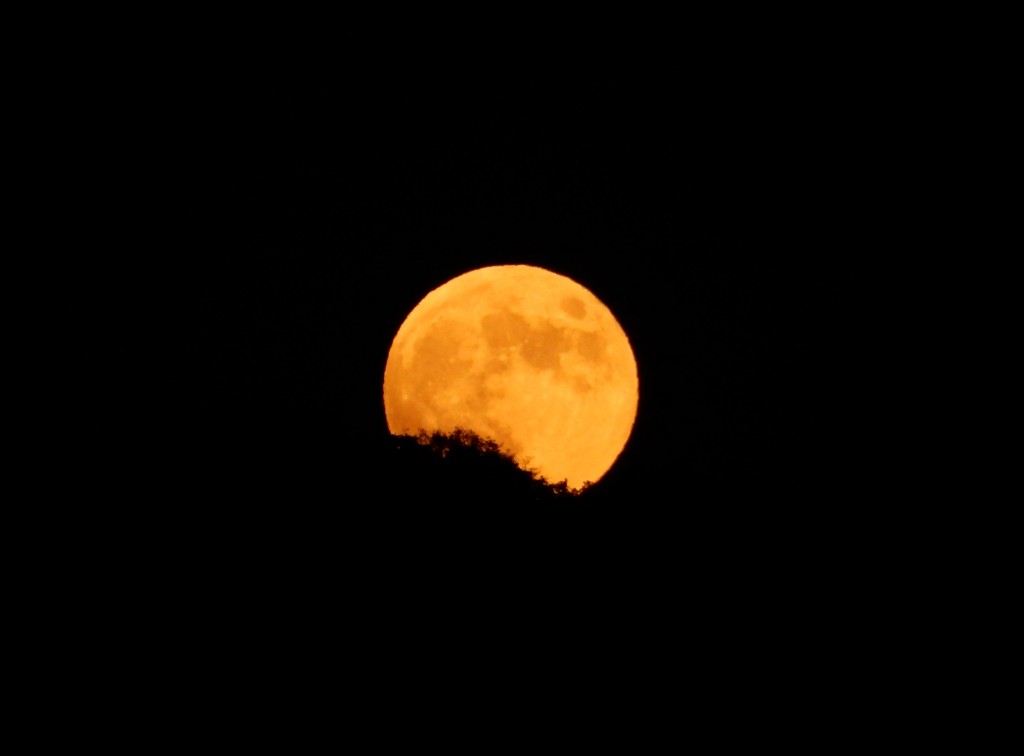
Tonight's blood moon rises behind Kyoto's Eastern Hills
A special kind of eclipse is scheduled for tonight in Japan, in which the sun, moon and earth will align so that the earth’s shadow covers the moon and it turns a reddish colour. Cultures in the past feared eclipses and made up stories to explain them. Japan’s Rock Cave myth may be a case in point (an eclipse of the sun rather than the moon). As the article below indicates, there are plenty of other such myths around the world…
******************************************************
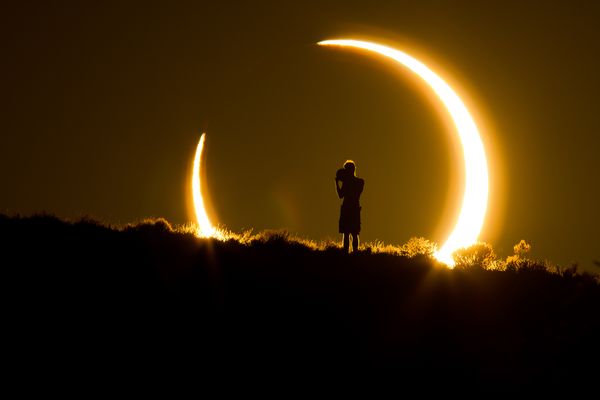
Photograph by Colleen Pinski, Your Shot, National Geographic
Solar Eclipse Myths From Around the World (courtesy National Geographic)
People around the world, and through time, have come up with many a tale to explain the sun’s disappearance.
by Jane J. Lee, National Geographic, November 1, 2013
Viking sky wolves, Korean fire dogs, and African versions of celestial reconciliation—these are only some of the many ways people around the world, and through the ages, have sought to explain solar eclipses.
“If you do a worldwide survey of eclipse lore, the theme that constantly appears, with few exceptions, is it’s always a disruption of the established order,” said E. C. Krupp, director of the Griffith Observatory in Los Angeles, California. That’s true of both solar and lunar eclipses.
“People depend on the sun’s movement,” Krupp said. “[It’s] regular, dependable, you can’t tamper with it. And then, all of a sudden, Shakespearean tragedy arrives and time is out of joint. The sun and moon do something that they shouldn’t be doing.”
What that disruption means depends on the culture, and not everyone views an eclipse as a bad thing, said Jarita Holbrook, a cultural astronomer at the University of the Western Cape in Bellville, South Africa.
Some see it as a time of terror, while others look at a solar eclipse as part of the natural order that deserves respect, or as a time of reflection and reconciliation.
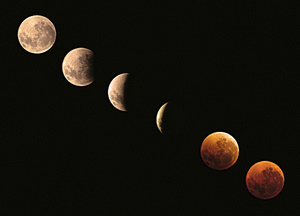
courtesy luc viator
Swallowing Fire
Many cultures explain eclipses, both solar and lunar, as a time when demons or animals consume the sun or the moon, said Krupp.
“The Vikings saw a pair of sky wolves chasing the sun or the moon,” said the Griffith Observatory astronomer. When one of the wolves caught either of the shining orbs, an eclipse would result. (Read “Vikings and Native Americans” in National Geographic magazine.)
“In Vietnam, a frog or a toad [eats] the moon or the sun,” Krupp added, while people of the Kwakiutl tribe on the western coast of Canada believe that the mouth of heaven consumes the sun or the moon during an eclipse. In fact, the earliest word for eclipse in Chinese, shih, means “to eat,” he said.
Eclipse Wizard
In order to combat this devouring, people in many cultures made noise in order to scare the demon or animal away, said Nancy Maryboy, president of the Indigenous Education Institute on San Juan Island, Washington. She’s currently working with NASA on bringing indigenous astronomy into mainstream awareness.
People banged pots and pans or played on drums to get whatever was swallowing the sun or the moon to go away, she explained. Krupp orchestrates a modern version of this during lunar eclipses on the front lawn of the Griffith Observatory. He dons a wizard’s outfit and leads the public on a march in front of the observatory while banging pots and pans to chase away whatever’s eating the moon. “We’re always successful,” Krupp said.
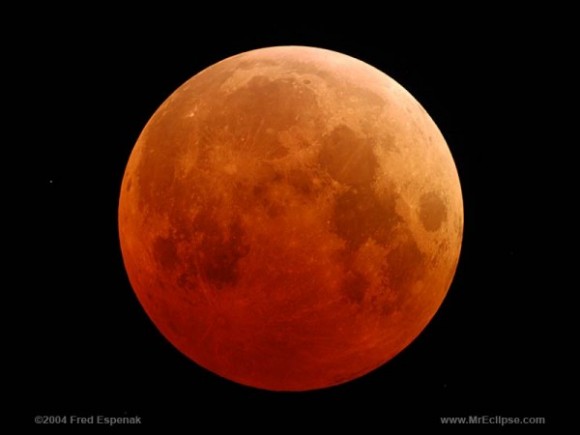
This is what a total eclipse looks like. This is the total eclipse of October 27, 2004 via Fred Espenak of NASA.
Celestial Larceny
Other myths tell of deception and theft to explain the sun’s disappearance during an eclipse. Korean eclipse mythology involves fire dogs that try to steal the sun or the moon, said Krupp. On orders from a king, the mythical canines try their best to capture the fiery sun or the ice-cold moon. They always fail, but whenever they bite either orb, an eclipse results.
One of the more colorful stories in Krupp’s opinion involves the Hindu demon Rahu, who disguises himself as a god in order to steal a taste of an elixir that grants immortality. The sun and moon see what Rahu is up to, and they report his crime to the god Vishnu.
“Vishnu slices off his head before [the elixr] can slide past his throat,” said Krupp. As a consequence, Rahu’s head turns immortal, but his body dies. The demon’s head continues to move through the sky, chasing the sun and the moon out of hatred. “Every now and then he catches them and swallows them,” explained Krupp. But since Rahu has no throat, the sun and the moon fall out of the bottom of his head.
Nature and Reconciliation
“My favorite myth is from the Batammaliba people in Togo and Benin” in Africa, said Holbrook. In this myth, the sun and the moon are fighting during an eclipse, she said. The people “encourage the sun and the moon to stop fighting.” “They see it as a time of coming together and resolving old feuds and anger,” Holbrook said. “It’s a myth that has held to this day.”
A Navajo tradition regarding eclipses has also endured into the present day, notes Maryboy. The Navajo regard the cosmic order of the universe as being all about balance, she said. “Something like an eclipse is just part of nature’s law. You pause to acknowledge that that time is special, [and] you reflect on the cosmic order.”
Maryboy explained that some Navajo still observe traditions associated with an eclipse by staying inside with their family, singing special songs, and refraining from eating, drinking, or sleeping.
You’re not supposed to look at an eclipse either, she added. “They say if you look at the sun during an eclipse, it will affect your eyes later.” A person who looks at the sun goes out of balance with the universe, leading to problems down the road. The same goes for eating and drinking during this time.
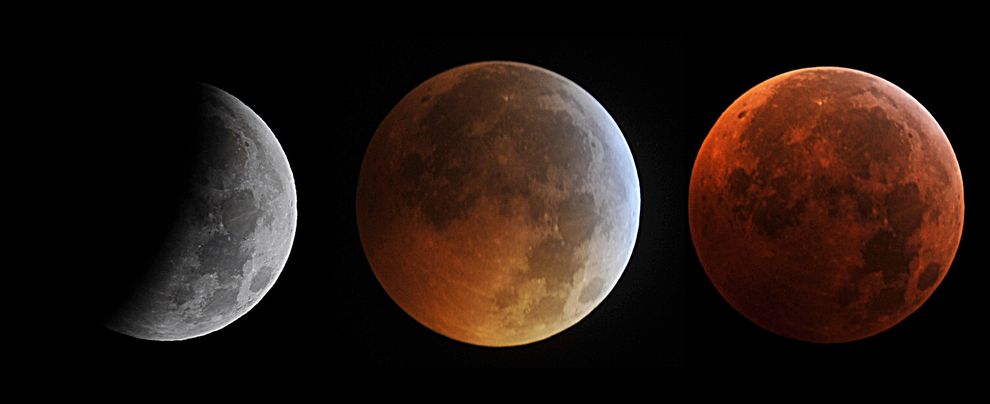
Stages of the blood moon, 2010 (photo Karen Bleier, AFP/Getty)

Leave a Reply